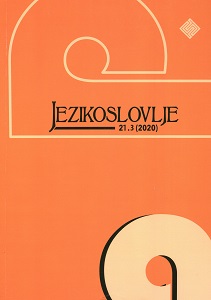The Otherness and the Consumer. External and internal horror as rhetorical framing devices on the silver screen and in real time
The Otherness and the Consumer. External and internal horror as rhetorical framing devices on the silver screen and in real time
Author(s): Ilhana ŠkrgićSubject(s): Cultural Anthropology / Ethnology, Culture and social structure , Sociology of Culture, Film / Cinema / Cinematography
Published by: Filozofski fakultet, Sveučilište Josipa Jurja Strossmayera, Osijek
Keywords: political discourse; rhetorical device; framing; horror; Otherness; consumerism; The Thing (1982); They Live (1988);
Summary/Abstract: This paper aims to analyze the main paradigms of the horror genre and their equivalents in the conservative – liberal political division in the United States by exploring the dominant political rhetoric and its specific framing devices as mirrored in horror cinema. The analysis focuses on two distinct celluloid works by John Carpenter: The Thing (1982), and They Live (1988), themselves constructed as subversive commentaries on the carefully intertwined American and global culture of fear and consumerism. The framing devices include the division of citizens based on race and other characteristics, the “us vs. them” mentality, negation of (inter)national unity and coexistence, the symbolism of the color red, as well as repetition and hyperbole. As powerful persuasive tools in the hands of the political elite, these devices influence the US citizens by appealing to their beliefs. These beliefs are based on models of morality (Lakoff 2002). The dualism of horror is also discussed, i.e. external versus internal horror (the Otherness outside and the alien within in Ognjanović 2016), and the way in which the binary quality of the genre informs and guides cinematic artworks in their exploration of society, especially one fraught with political and social issues. The paper investigates why the two analyzed films are important for a discussion of contemporary American society and how the horror genre can be seen as a prism through which various issues can be explored
Journal: Jezikoslovlje
- Issue Year: XXI/2020
- Issue No: 3
- Page Range: 395-424
- Page Count: 30
- Language: English

